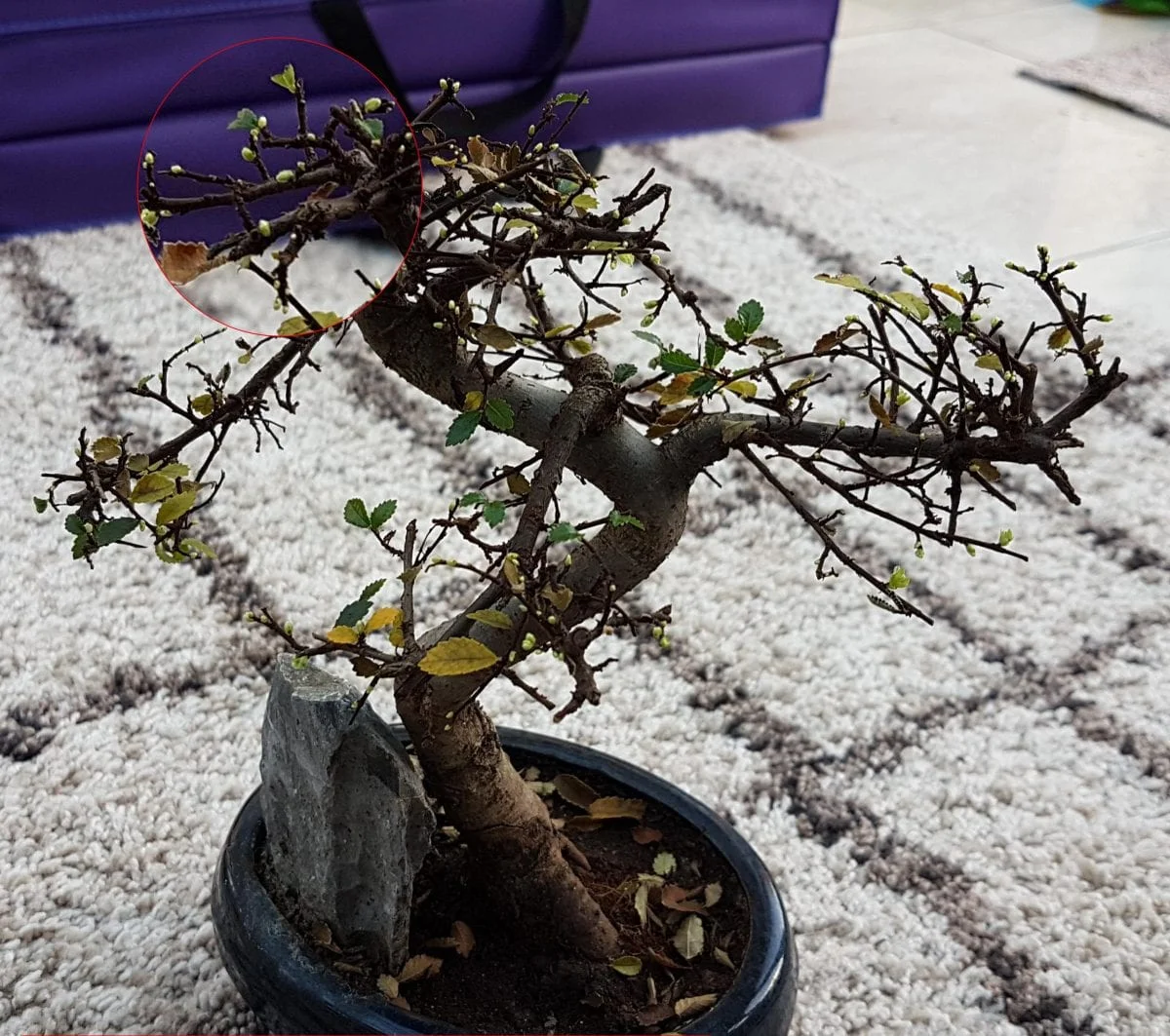Leaf Drop on My Bonsai – Help!
Firstly, don’t panic! Leaf drop is very normal and it doesn’t necessarily mean that your bonsai is dying. There are 3 main causes of leaf drop, as shown below.
Why is my bonsai dropping leaves?
| Symptoms | What to do next | Image | |
|---|---|---|---|
| Reacclimatising (Very common and nothing to worry about) | – Normally happens within 2 months of receiving/moving your bonsai – Older leaves will drop (those closer to the trunk) – Newer (often a lighter green) leaves will start growing at the ends of the branches | – Please give your bonsai some time to acclimatise to its new location. – Keep the soil just damp to the touch at all times. – It can often take 4-6 weeks before new buds appear | 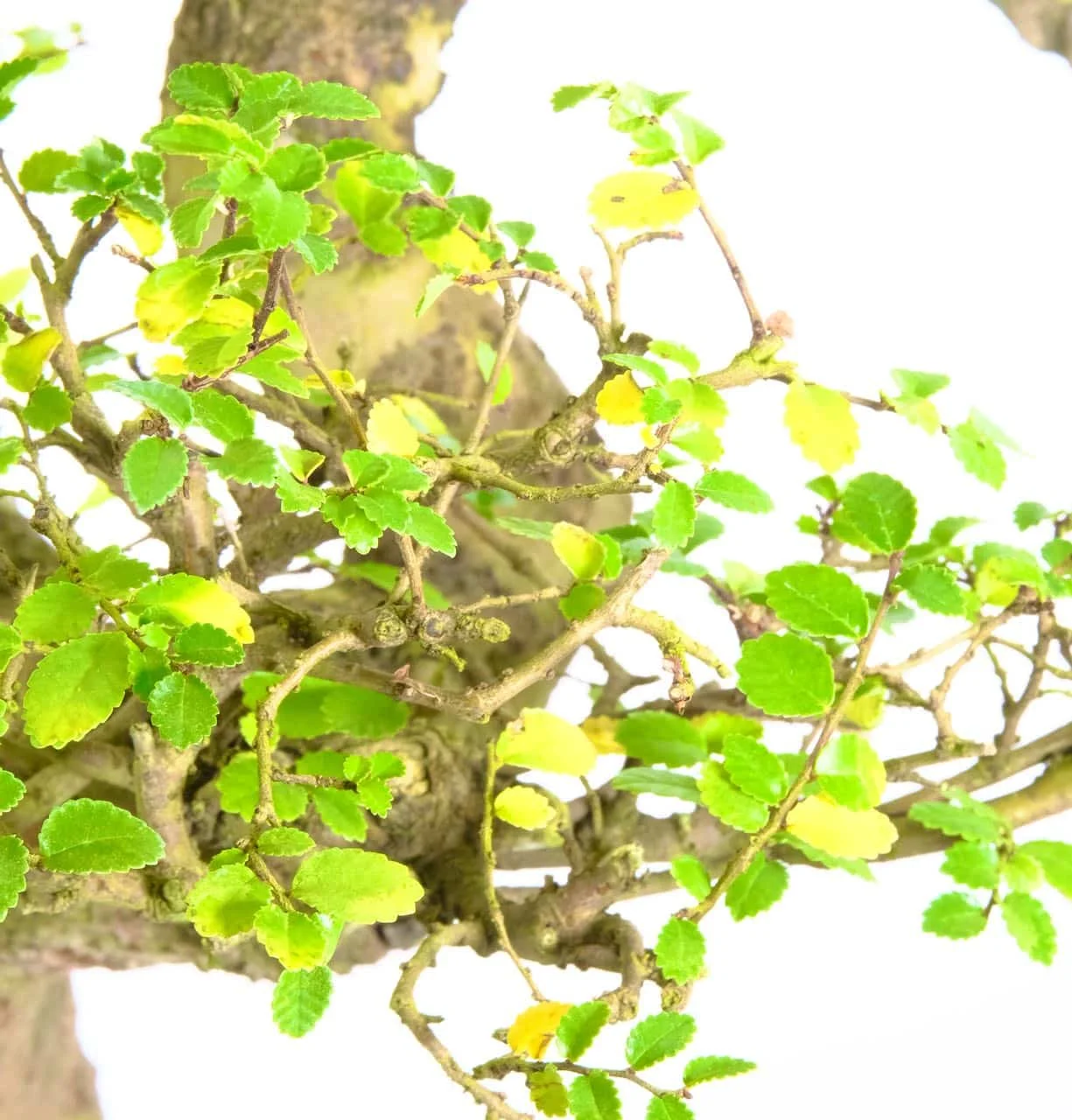 |
| Underwatering (very common and very serious) | – Often during hotter periods, but can happen at any time of the year – Older and newer leaves are effected – Leaves go yellow/brown and crispy – Symptoms are displayed fairly quickly | – Please stand your bonsai in a container of water for 1 hour so the water just covers the top of the pot. – Please watch our watering video and keep the soil damp at all times – It can often take 6-8 weeks before you see any signs of improvement | 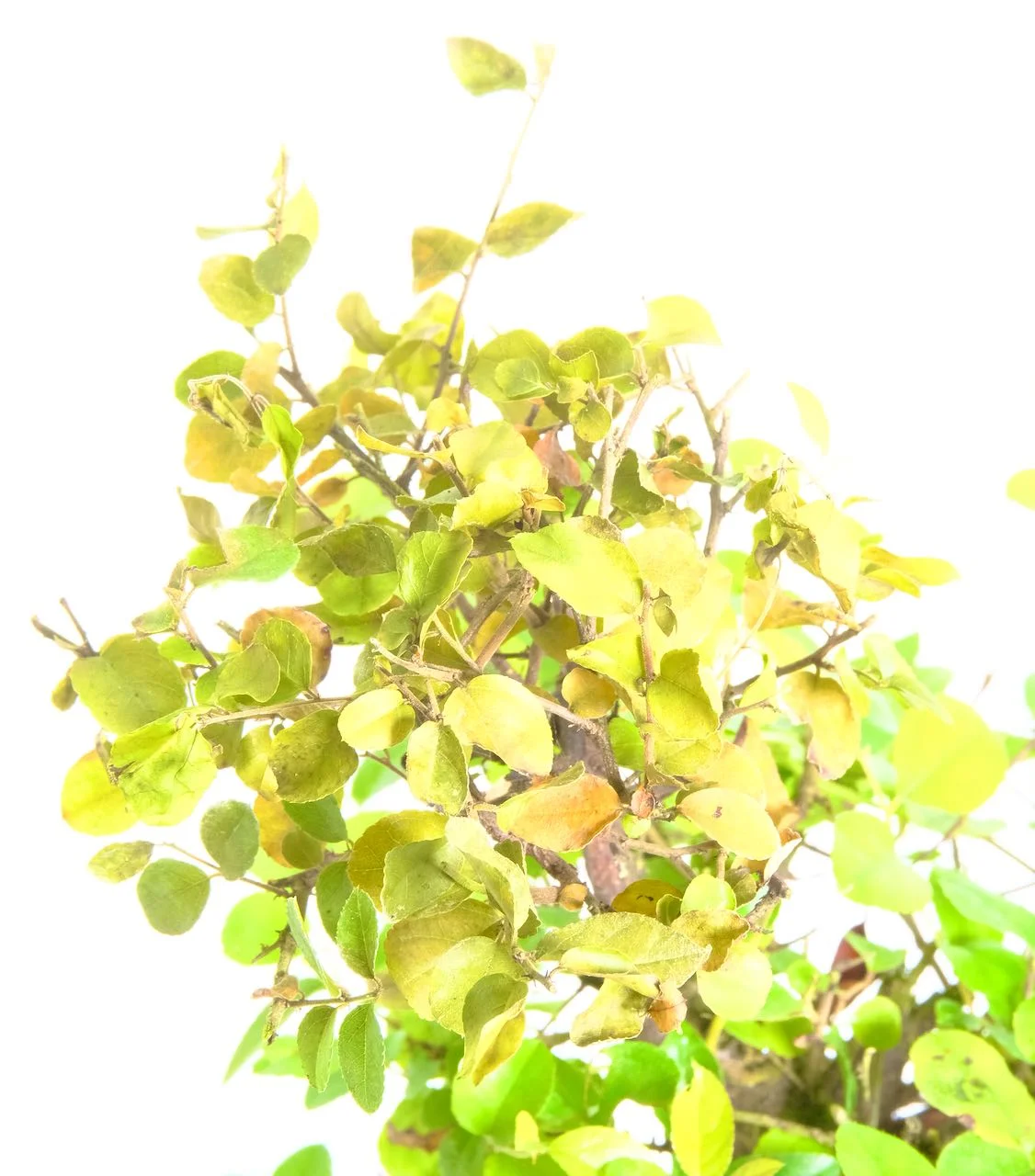 |
| Overwatering (less common and serious) | – Often during cooler periods, but can happen any time of the year – Older and newer leaves are effected – Leaves go black/brown – Symptoms for overwatering can take a while to show | – Please watch our watering video and keep the soil just damp at all times – It can often take 6-8 weeks before you see any signs of improvement | 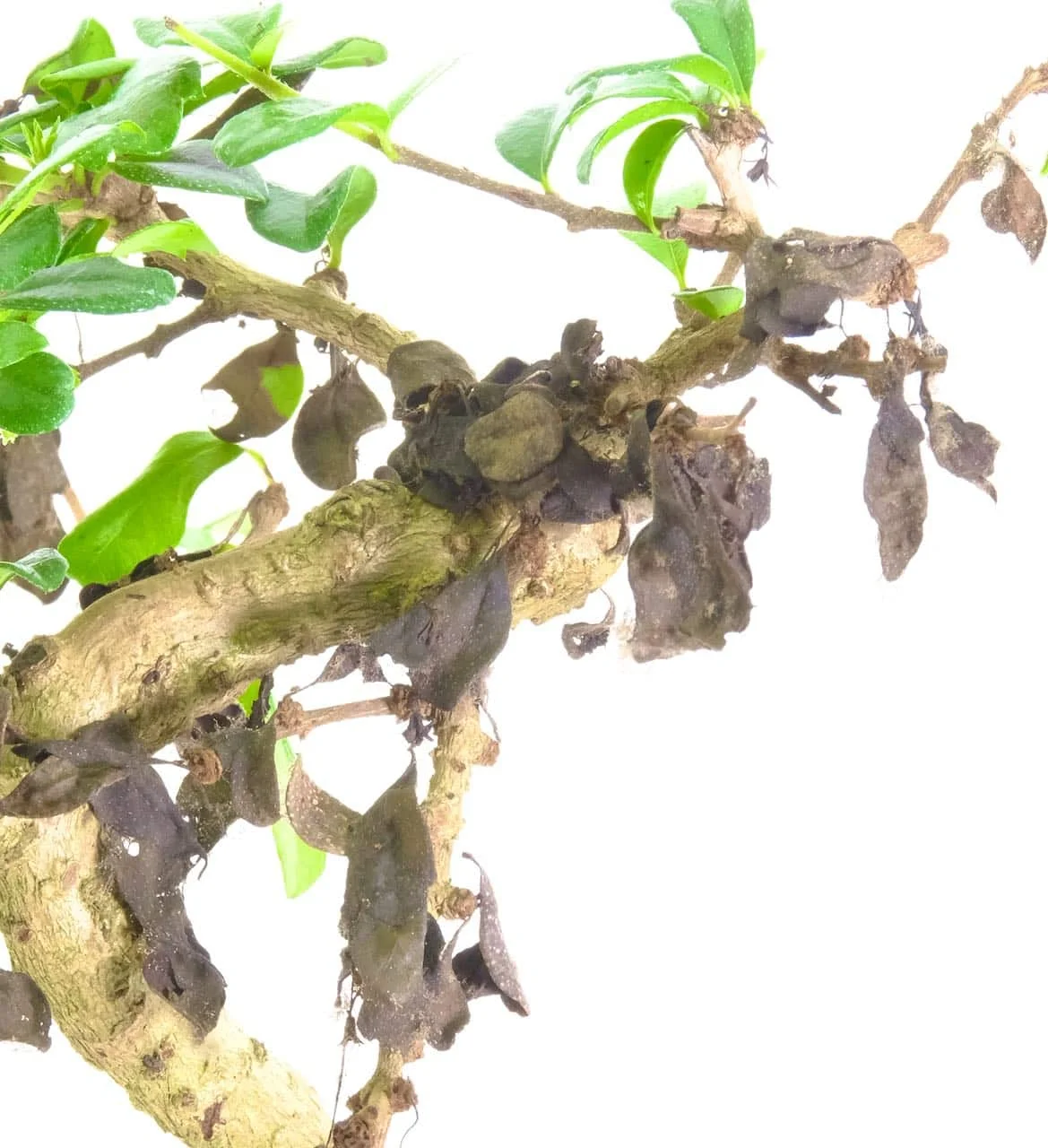 |
Some Examples of Leaf Drop due to Reacclimatisation
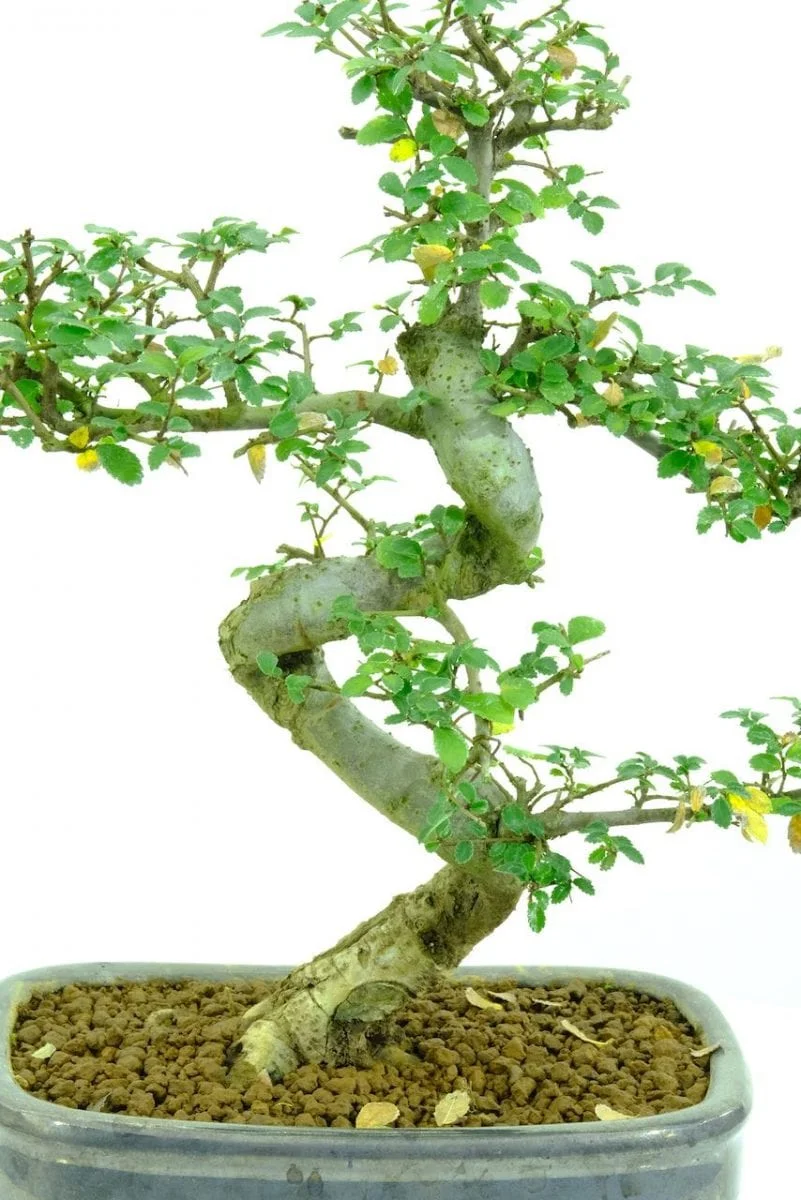
As you can see in Fig.1, the inner leaves are the ones turning yellow. They will further discolour and then drop off.
However, new buds will appear shortly after they’ve dropped.
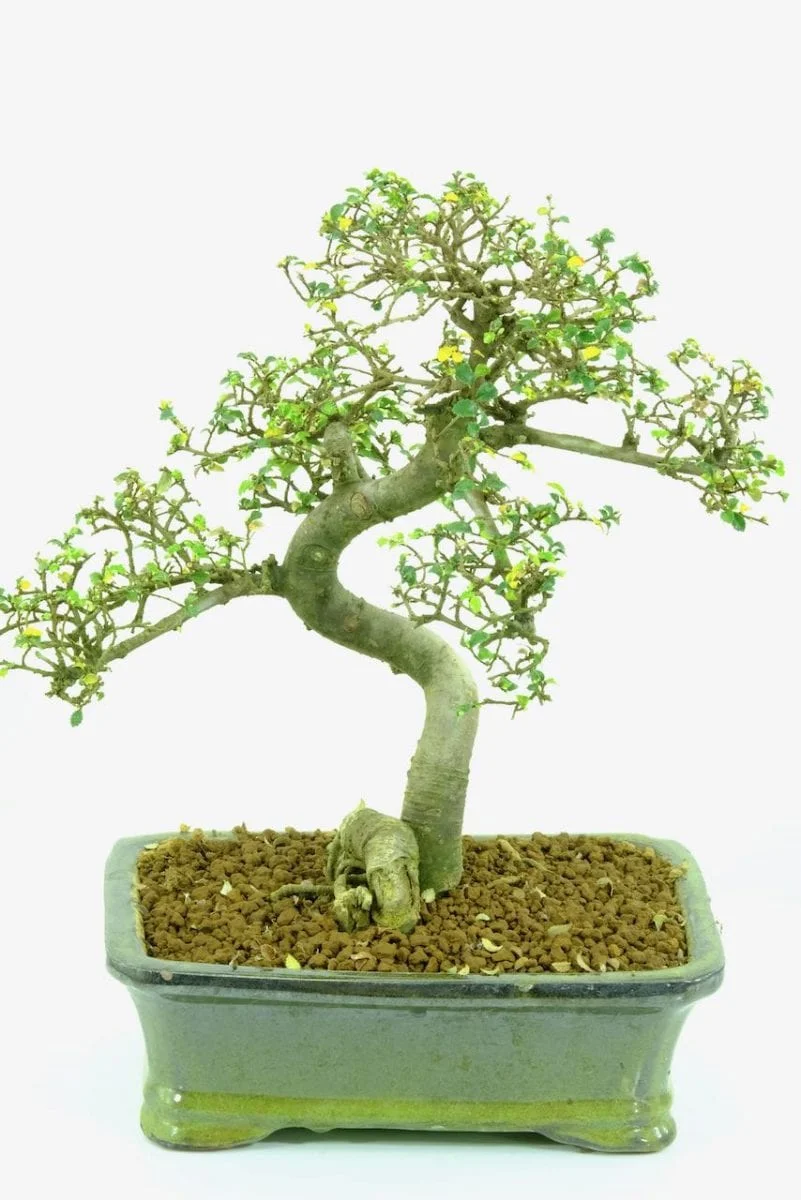
The bonsai in Fig.2 dropped all its leaves. Yours may do the same and it seems rather drastic. Don’t worry though.
As you can see, all the new foliage there started to grow shortly after they dropped.
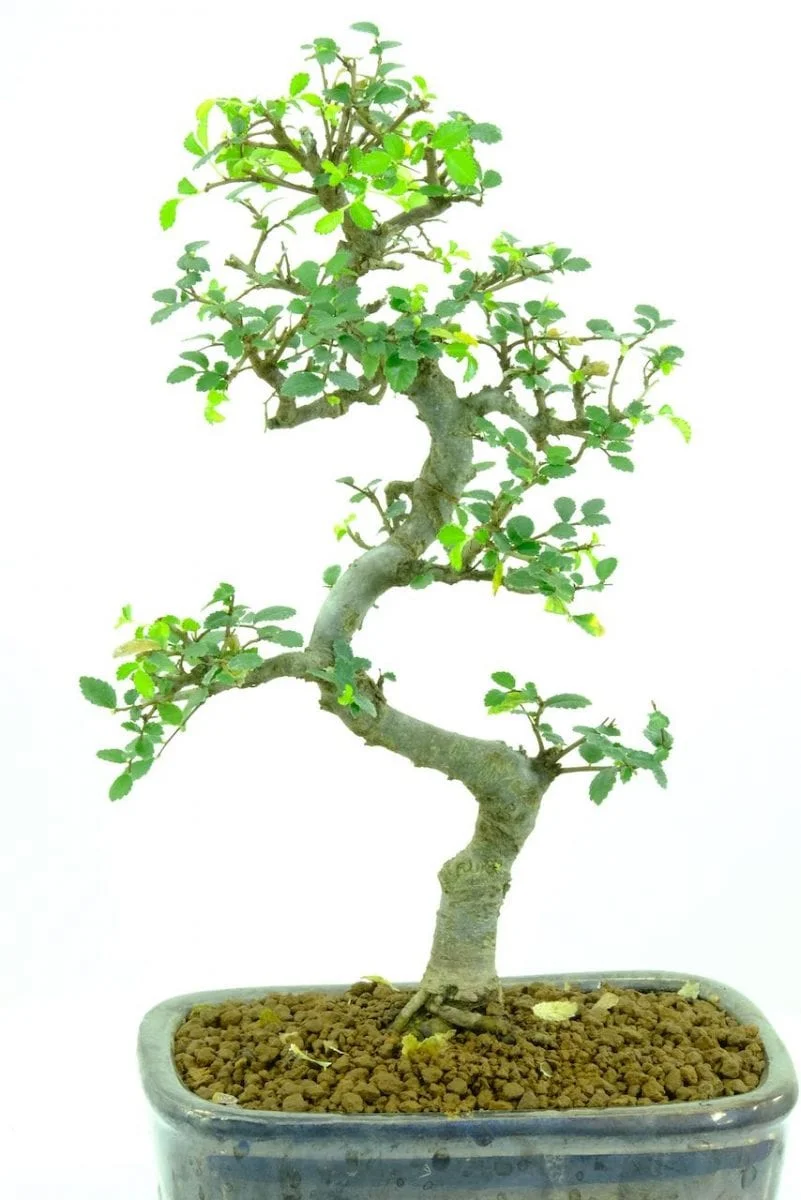
Fig.3 shows the strong new growth coming through after some leaves have dropped on this bonsai.
The new growth is indicated by the lighter colour leaves and shoots.


 Are the Leaves on your Bonsai Dry & Crispy?
Are the Leaves on your Bonsai Dry & Crispy?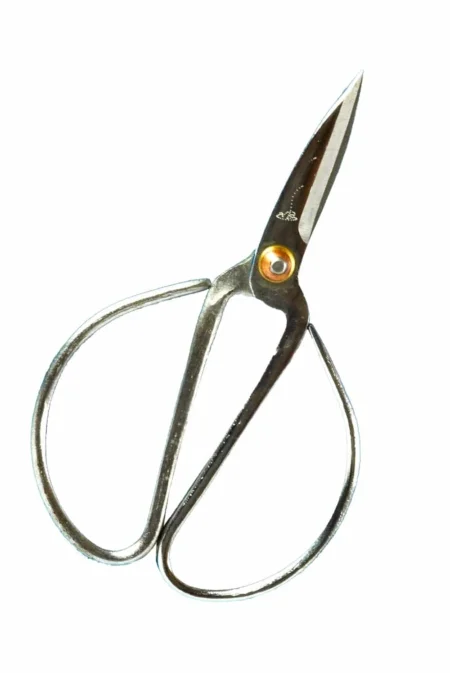
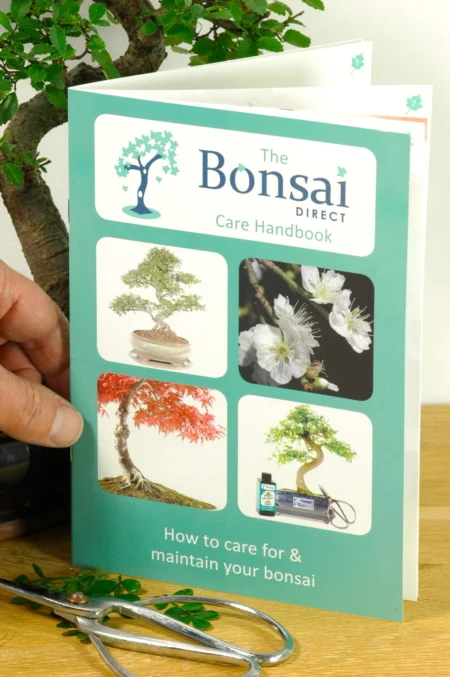



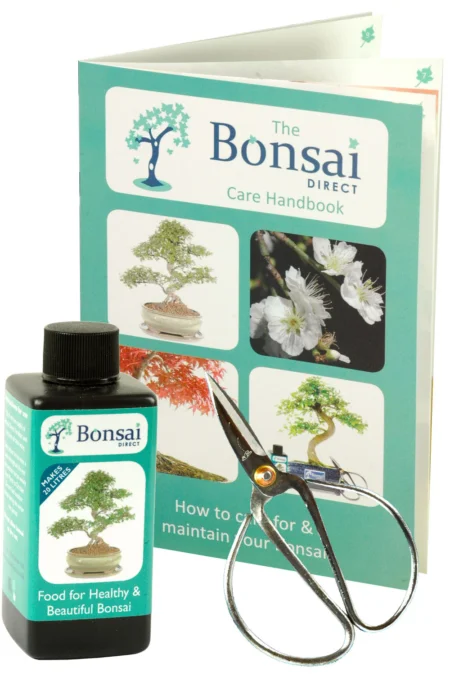
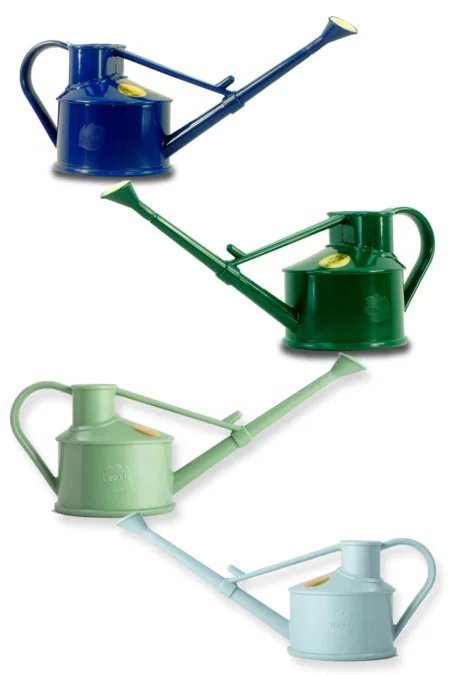
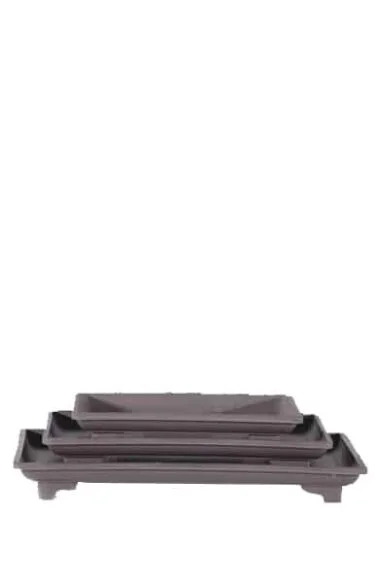
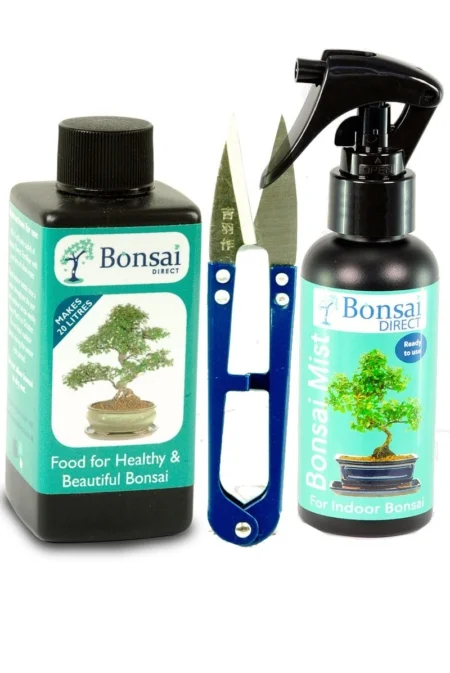



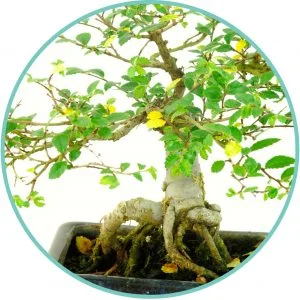 ..do not always mean that you have a problem. A number of trees, some evergreens included, have leaves which turn yellow at a certain time of the year. Autumn is, of course, when leaves on deciduous trees change colour and fall. Evergreens such as Chinese Elms and Serissas can change colour during and after the winter period. So how do you know if something is wrong?
..do not always mean that you have a problem. A number of trees, some evergreens included, have leaves which turn yellow at a certain time of the year. Autumn is, of course, when leaves on deciduous trees change colour and fall. Evergreens such as Chinese Elms and Serissas can change colour during and after the winter period. So how do you know if something is wrong?